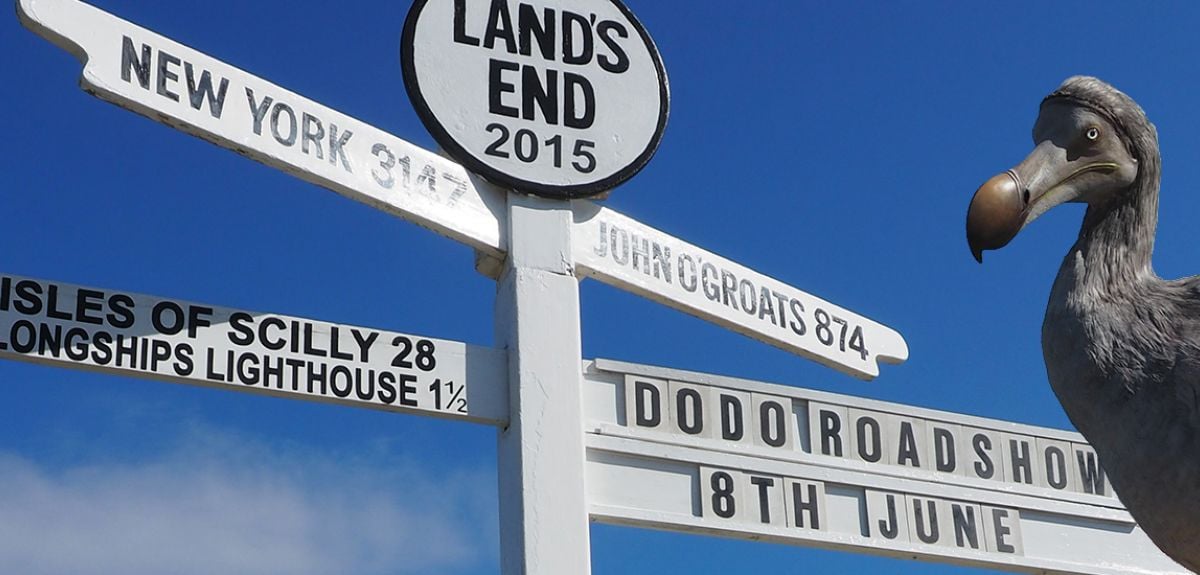
Credit: OUMNH
Read all about it: Dodo special
At time of writing, the only remaining soft tissue material of a dodo anywhere in the world is on the M4 motorway.
But fans of the Oxford University Museum of Natural History's iconic exhibit need not worry. The dodo is safe and touring the country to mark the Museum’s nomination in this year’s Art Fund Prize for Museum of the Year.
Museum staff are taking the dodo from Land's End to John O'Groats to 'meet' and 'interview' star objects from museums and galleries across the country, including Yorkshire Sculpture Park, National Museum Wales, Perth Museum & Art Gallery and Eden Project. The interviews are being published on the Museum's blog.
Staff are touring with the dodo model from the Museum’s displays, a cast of the head, and real foot bones from the same animal.
Getting out on the road to visit museums and galleries far and wide seemed like a great way to talk about the huge breadth of collections that we have in the UK, both in natural history and well beyond,’ says Museum director Professor Paul Smith.
This is a big week for the Oxford dodo, as it has been announced that Oxford University will host ‘The Oxford Dodo: Culture at the Crossroads’ as part of the Being Human festival, the UK’s only national festival of the humanities. The event will be in November and is a joint project between The Oxford Research Centre in the Humanities (TORCH) and the Museum of Natural History.
The University of Oxford has been awarded funding to hold the event during the festival week from 11 to 22 November. The grant from Being Human, which is supported by the AHRC, British Academy and Wellcome Trust, will allow the University to take part in the 11-day national programme of debates and activities for all ages.
Kirsten Shepherd-Barr, an English professor at the University of Oxford and the University’s Humanities Knowledge Exchange Champion, says: 'The dodo: an icon of extinction, and a powerful symbol of humanity's impact on the environment. It crosses disciplinary lines, encompassing literature, science, the arts, geography.
'It haunts our imagination, from Lewis Carroll's Alice in Wonderland to David Quammen's The Song of the Dodo to the Natural History Museum's very own exhibit on this extraordinary and elusive creative.
'What did it sound like? How did it really look? Why are we left to reconstruct, from a few bones, this creature that seems so real and touches us so immediately?'